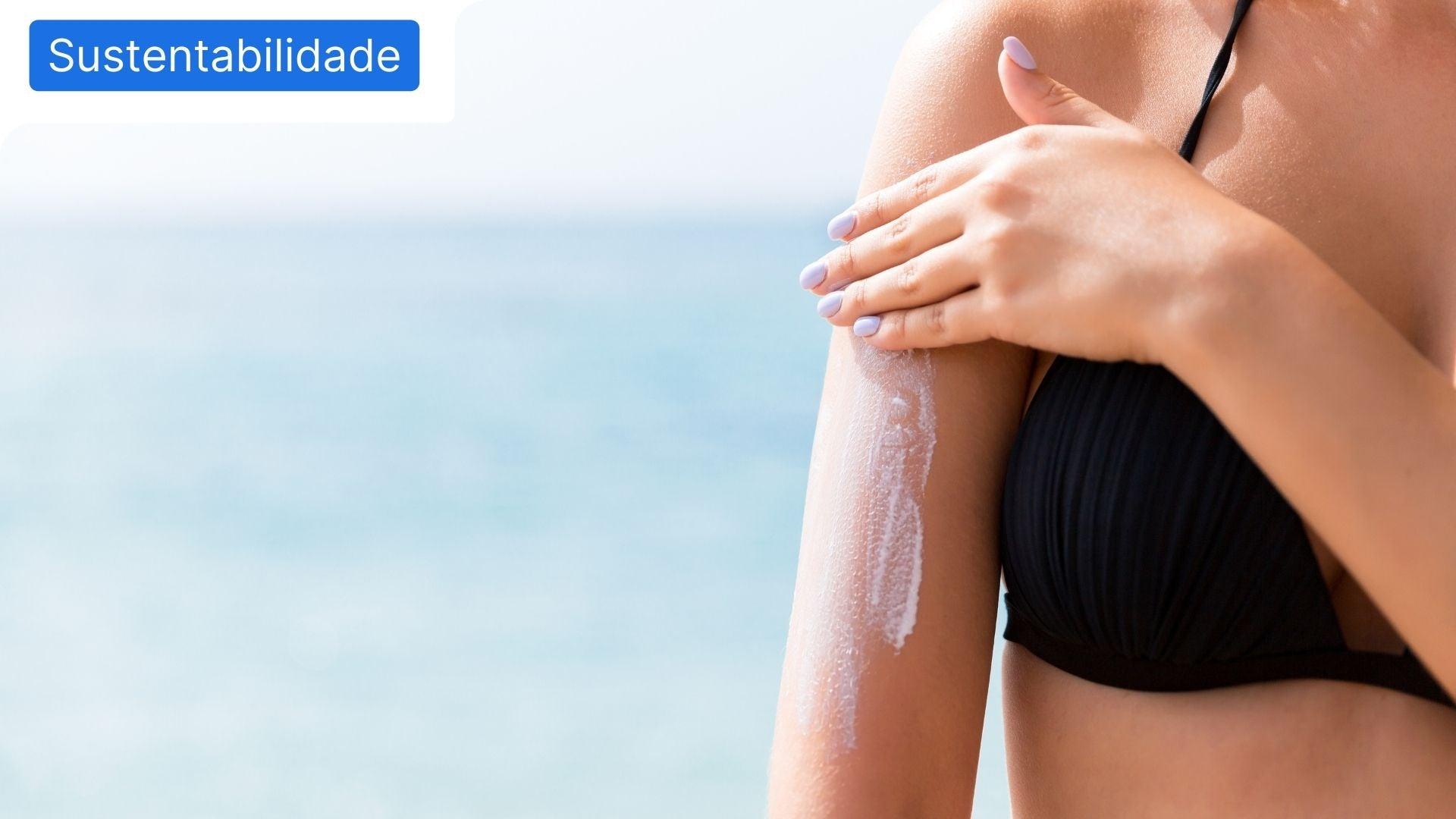
Sustainable sunscreen: 4 suggestions
During summer holidays when we are more exposed to the sun, particularly when we go to the beach, pool or rivers, it becomes important to protect our skin against UV radiation.
The need to use sunscreens is a health issue. But do sunscreens have an environmental impact? Stay on this side and discover our suggestions so you can have your sustainable sunscreen.
UV radiation: what is its impact on our routine?
UV radiation is one of the sun's emissions and, according to the Directorate-General for Health (DGS), it is divided into 3 bands:
- RUV-A: 315nm to 400nm
- RUV-B: 280nm to 315nm
- RUV-C: 100nm to 280nm
Bands A and B are those that have the greatest impact on our health.
Some of the benefits of UV radiation are the feeling of physical and mental well-being, the stimulation of melanin production, the treatment of jaundice and the synthesis of vitamin D.
This vitamin, according to the DGS, “(…) contributes to increased absorption of calcium and phosphorus from food, to strengthening bones, to immune function and to the formation of blood cells.”
However, excess UV radiation can cause serious problems such as skin cancer, cataracts or immunosuppression.
How can you protect yourself
When UV radiation has high levels, it is advisable to take some precautions:
- Protect yourself from direct exposure to the sun;
- Drink more water and juices, even if you are not thirsty;
- Wear loose, light and cool clothing;
- Avoid staying in vehicles exposed to the sun;
- Avoid activities that require intense physical effort (such as sports at times of day with higher temperatures);
- Wear sunglasses with UV filter, hat, t-shirt and sunscreen.
Sunscreens: what is the environmental impact?
Some of the organic UV filters used in sunscreens have received attention due to the possible environmental impacts they may have. Are they:
- Oxybenzone (benzophenone-3);
- 4-methylbenzylidene camphor;
- Octocrylene;
- Octinoxate (ethylhexyl methoxycinnamate).
There are studies that identify UV filters such as oxybenzone, octocrylene, octinoxate and ethylhexyl salicylate in water sources that are difficult to remove in wastewater treatment plants.
They also add that oxybenzone has been identified as a filter that may contribute to the bleaching of coral reefs.
4-methylbenzylidene camphor, oxybenzone, octocrylene and octinoxate have been identified in fish species, which may have impacts on the food chain.

In addition to these possible problems, there is also that of microplastics: Deco Proteste reveals that “almost all sunscreens include microplastics”.

What are the alternatives?
There are inorganic (mineral) filters that also protect against UV rays. Unlike organic UV filters which are made up of molecules that absorb UV radiation and transform it into harmless energy, inorganic filters are made up of substances (e.g. zinc oxide and titanium dioxide) that act as a physical barrier and reflect and scatter the radiation.
One option may be to opt for mineral-based sunscreens that use zinc oxide or titanium dioxide.
At this point, it is worth mentioning that a study confirmed that “zinc oxide nanoparticles can disintegrate cell membranes and accumulate in the cytoplasm, where they interact with biomolecules, causing cell apoptosis, which leads to cell death.”
Therefore, if you choose mineral filters, it is important to check the ingredients list to see if they contain zinc oxide nanoparticles.
Despite all this evidence, scientists from the University of York recently revealed that more research is needed into the environmental impact of sunscreen on coral reefs.
They further add that "undoubtedly, products that can help protect against the harmful effects of UV radiation on human health are extremely important and therefore we need reliable and extensive evidence to suggest any changes or reductions in these products."
Sustainable sunscreen: 4 options
The use of sunscreen must be appropriate for each skin type and can be chosen with the help of professionals in the field, especially in the case of people who have associated skin diseases.
We give you 4 suggestions for having a sustainable sunscreen with you.
Acorelle
The Acorelle brand produces natural and organic cosmetics and its products are certified by Ecocert (an entity that regulates and credits the ingredients and processes used in production, ensuring that they are ecologically correct).
According to Organii “The high water resistance of our sun protection products allows the majority of the product to remain on the surface of the skin, thus protecting the oceans and coral reefs.”.
Amazinc
At Mind The Trash you can also find a sustainable sunscreen: the Amazinc Mineral Sunscreen SPF 50+ has plastic-free, reusable and recyclable packaging and is 100% natural. It has UVA and UVB protection and has no polluting or environmentally toxic chemical ingredients.
Ibiza Sun
Sol de Ibiza Natural Sunscreen also provides effective protection with natural ingredients. It is a vegan, reef-safe, plastic-free sunscreen and allows UVA and UVB protection.
Nuura
NUURA is a brand founded by a family of pharmacists who are pioneers in creating natural probiotics in their formulas.
Sunscreen SPF 50+ UVA/UVB/IR is 96.8% natural, has 100% mineral filters and is vegan and cruelty free. Furthermore, it is water resistant, hypoallergenic and has no nano ingredients.
Remember: the important thing is to always wear sunscreen to protect yourself even when you are in the shade.
Author: Daniela Matos







